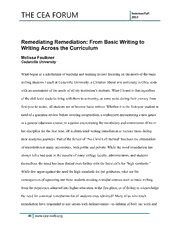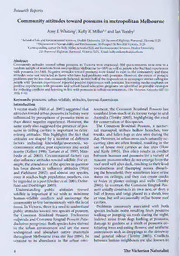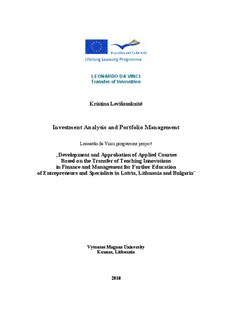
Investment Analysis and Portfolio Management PDF
Preview Investment Analysis and Portfolio Management
LEONARDO DA VINCI Transfer of Innovation Kristina Levišauskait÷ Investment Analysis and Portfolio Management Leonardo da Vinci programme project „Development and Approbation of Applied Courses Based on the Transfer of Teaching Innovations in Finance and Management for Further Education of Entrepreneurs and Specialists in Latvia, Lithuania and Bulgaria” Vytautas Magnus University Kaunas, Lithuania 2010 Investment Analysis and Portfolio Management Table of Contents Introduction …………………………………………………………………………...4 1. Investment environment and investment management process…………………...7 1.1 Investing versus financing……………………………………………………7 1.2. Direct versus indirect investment …………………………………………….9 1.3. Investment environment……………………………………………………..11 1.3.1. Investment vehicles …………………………………………………..11 1.3.2. Financial markets……………………………………………………...19 1.4. Investment management process…………………………………………….23 Summary…………………………………………………………………………..26 Key-terms…………………………………………………………………………28 Questions and problems…………………………………………………………...29 References and further readings…………………………………………………..30 Relevant websites…………………………………………………………………31 2. Quantitative methods of investment analysis……………………………………...32 2.1. Investment income and risk………………………………………………….32 2.1.1. Return on investment and expected rate of return…………………...32 2.1.2. Investment risk. Variance and standard deviation…………………...35 2.2. Relationship between risk and return………………………………………..36 2.2.1. Covariance……………………………………………………………36 2.2.2. Correlation and Coefficient of determination………………………...40 2.3. Relationship between the returns on stock and market portfolio……………42 2.3.1. Characteristic line and Beta factor…………………………………….43 2.3.2. Residual variance……………………………………………………...44 Summary…………………………………………………………………………...45 Key-terms………………………………………………………………………….48 Questions and problems…………………………………………………………...48 References and further readings…………………………………………………...50 3. Theory for investment portfolio formation………………………………………...51 3.1. Portfolio theory………………………………………………………………51 3.1.1. Markowitz portfolio theory…………………………………………...51 3.1.2. The expected rate of return and risk of portfolio……………………..54 3.2. Capital Asset Pricing Model…………………………………………………56 3.3. Arbitrage Price Theory………………………………………………………59 3.4. Market Efficiency Theory……………………………………………………62 Summary…………………………………………………………………………...64 Key-terms………………………………………………………………………….66 Questions and problems……………………………………………………………67 References and further readings…………………………………………………...70 4. Investment in stocks………………….....................................................................71 4.1. Stock as specific investment……………………………………………….....71 4.2. Stock analysis for investment decision making………………………………72 4.2.1. E-I-C analysis……………………………………………………….73 4.2.2. Fundamental analysis………………………………………………..75 4.3. Decision making of investment in stocks. Stock valuation…………………..77 4.4. Formation of stock portfolios………………………………………………...82 4.5. Strategies for investing in stocks……………………………………………..84 Summary…………………………………………………………………………..87 Key-terms…………………………………………………………………………90 2 Investment Analysis and Portfolio Management Questions and problems…………………………………………………………..90 References and further readings…………………………………………………..93 Relevant websites………………………………………………………………....93 5. Investment in bonds……………………………………………………………….94 5.1. Identification and classification of bonds……………………………………94 5.2. Bond analysis: structure and contents………………………………………..98 5.2.1. Quantitative analysis…………………………………………………..98 5.2.2. Qualitative analysis…………………………………………………..101 5.2.3. Market interest rates analysis………………………………………...103 5.3. Decision making for investment in bonds. Bond valuation………………...106 5.4. Strategies for investing in bonds. Immunization…………………………...109 Summary…………………………………………………………………………113 Key-terms………………………………………………………………………..116 Questions and problems………………………………………………………….117 References and further readings………………………………………………... 118 Relevant websites………………………………………………………………..119 6. Psychological aspects in investment decision making…………………………..120 6.1. Overconfidence……………………………………………………………..120 6.2. Disposition effect…………………………………………………………...123 6.3. Perceptions of investment risk……………………………………………...124 6.4. Mental accounting and investing…………………………………………...126 6.5. Emotions and investment decisions………………………………………...128 Summary………………………………………………………………………....130 Key-terms………………………………………………………………………..132 Questions and problems………………………………………………………….132 References and further readings…………………………………………………133 7. Using options as investments……………………………………………………..135 7.1. Essentials of options………………………………………………………..135 7.2. Options pricing……………………………………………………………..136 7.3. Using options. Profit and loss on options…………………………………..138 7.4. Portfolio protection with options. Hedging………………………………...141 Summary…………………………………………………………………………143 Key-tems…………………………………………………………………………145 Questions and problems………………………………………………………….146 References and further readings…………………………………………………147 Relevant websites………………………………………………………………..147 8. Portfolio management and evaluation…………………………………………...148 8.1. Active versus passive portfolio management………………………………148 8.2. Strategic versus tactical asset allocation……………………………………150 8.3. Monitoring and revision of the portfolio…………………………………...152 8.4. Portfolio performance measures……………………………………………154 Summary…………………………………………………………………………156 Key-terms………………………………………………………………………..158 Questions and problems………………………………………………………….158 References and further readings…………………………………………………160 Relevant websites………………………………………………………………..161 Abbreviations and symbols used…………………………………………………….162 Bibliography…………………………………………………………………………164 Annexes……………………………………………………………………………...165 3 Investment Analysis and Portfolio Management Introduction Motivation for Developing the Course Research by the members of the project consortium Employers’ Confederation of Latvia and Bulgarian Chamber of Commerce and Industry indicated the need for further education courses. Innovative Content of the Course The course is developed to include the following innovative content: • Key concepts of investment analysis and portfolio management which are explained from an applied perspective emphasizing the individual investors‘decision making issues. • Applied exercises and problems, which cover major topics such as quantitative methods of investment analysis and portfolio formation, stocks and bonds analysis and valuation for investment decision making, options pricing and using as investments, asset allocation, portfolio rebalancing, and portfolio performance measures. • Summaries, Key-terms, Questions and problems are provided at the end of every chapter, which aid revision and control of knowledge acquisition during self-study; • References for further readings and relevant websites for broadening knowledge and analyzing real investment environment are presented at the end of every chapter. Innovative Teaching Methods of the Course The course is developed to utilize the following innovative teaching methods: • Availability on the electronic platform with interactive learning and interactive evaluation methods; • Active use of case studies and participant centered learning; • Availability in modular form; • Utilizing two forms of learning - self-study and tutorial consultations; • Availability in several languages simultaneously. Target Audience for the Course The target audience is: entrepreneurs, finance and management specialists from Latvia, Lithuania and Bulgaria. 4 Investment Analysis and Portfolio Management The course assumes little prior applied knowledge in the area of finance. The course is intended for 32 academic hours (2 credit points). Course Objectives Investment analysis and portfolio management course objective is to help entrepreneurs and practitioners to understand the investments field as it is currently understood and practiced for sound investment decisions making. Following this objective, key concepts are presented to provide an appreciation of the theory and practice of investments, focusing on investment portfolio formation and management issues. This course is designed to emphasize both theoretical and analytical aspects of investment decisions and deals with modern investment theoretical concepts and instruments. Both descriptive and quantitative materials on investing are presented. Upon completion of this course the entrepreneurs shall be able: • to describe and to analyze the investment environment, different types of investment vehicles; • to understand and to explain the logic of investment process and the contents of its’ each stage; • to use the quantitative methods for investment decision making – to calculate risk and expected return of various investment tools and the investment portfolio; • to distinguish concepts of portfolio theory and apply its’ principals in the process of investment portfolio formation; • to analyze and to evaluate relevance of stocks, bonds, options for the investments; • to understand the psychological issues in investment decision making; • to know active and passive investment strategies and to apply them in practice. The structure of the course The Course is structured in 8 chapters, covering both theoretical and analytical aspects of investment decisions: 1. Investment environment and investment process; 2. Quantitative methods of investment analysis; 3. Theory of investment portfolio formation; 4. Investment in stocks; 5 Investment Analysis and Portfolio Management 5. Investment in bonds; 6. Psychological aspects in investment decision making; 7. Using options as investments; 8. Portfolio management and evaluation. Evaluation Methods As has been mentioned before, every chapter of the course contains opportunities to test the knowledge of the audience, which are in the form of questions and more involved problems. The types of question include open ended questions as well as multiple choice questions. The problems usually involve calculations using quantitative tools of investment analysis, analysis of various types of securities, finding and discussing the alternatives for investment decision making. Summary for the Course The course provides the target audience with a broad knowledge on the key topics of investment analysis and management. Course emphasizes both theoretical and analytical aspects of investment decision making, analysis and evaluation of different corporate securities as investments, portfolio diversification and management. Special attention is given to the formulation of investment policy and strategy. The course can be combined with other further professional education courses developed in the project. 6 Investment Analysis and Portfolio Management 1. Investment environment and investment management process Mini-contents 1.1. Investing versus financing 1.2. Direct versus indirect investment 1.3. Investment environment 1.3.1. Investment vehicles 1.3.2. Financial markets 1.4. Investment management process Summary Key terms Questions and problems References and further readings Relevant websites 1.1. Investing versus financing The term ‘investing” could be associated with the different activities, but the common target in these activities is to “employ” the money (funds) during the time period seeking to enhance the investor’s wealth. Funds to be invested come from assets already owned, borrowed money and savings. By foregoing consumption today and investing their savings, investors expect to enhance their future consumption possibilities by increasing their wealth. But it is useful to make a distinction between real and financial investments. Real investments generally involve some kind of tangible asset, such as land, machinery, factories, etc. Financial investments involve contracts in paper or electronic form such as stocks, bonds, etc. Following the objective as it presented in the introduction this course deals only with the financial investments because the key theoretical investment concepts and portfolio theory are based on these investments and allow to analyze investment process and investment management decision making in the substantially broader context Some information presented in some chapters of this material developed for the investments course could be familiar for those who have studied other courses in finance, particularly corporate finance. Corporate finance typically covers such issues as capital structure, short-term and long-term financing, project analysis, current asset management. Capital structure addresses the question of what type of long-term financing is the best for the company under current and forecasted market conditions; project analysis is concerned with the determining whether a project should be undertaken. Current assets and current liabilities management addresses how to 7 Investment Analysis and Portfolio Management manage the day-by-day cash flows of the firm. Corporate finance is also concerned with how to allocate the profit of the firm among shareholders (through the dividend payments), the government (through tax payments) and the firm itself (through retained earnings). But one of the most important questions for the company is financing. Modern firms raise money by issuing stocks and bonds. These securities are traded in the financial markets and the investors have possibility to buy or to sell securities issued by the companies. Thus, the investors and companies, searching for financing, realize their interest in the same place – in financial markets. Corporate finance area of studies and practice involves the interaction between firms and financial markets and Investments area of studies and practice involves the interaction between investors and financial markets. Investments field also differ from the corporate finance in using the relevant methods for research and decision making. Investment problems in many cases allow for a quantitative analysis and modeling approach and the qualitative methods together with quantitative methods are more often used analyzing corporate finance problems. The other very important difference is, that investment analysis for decision making can be based on the large data sets available form the financial markets, such as stock returns, thus, the mathematical statistics methods can be used. But at the same time both Corporate Finance and Investments are built upon a common set of financial principles, such as the present value, the future value, the cost of capital). And very often investment and financing analysis for decision making use the same tools, but the interpretation of the results from this analysis for the investor and for the financier would be different. For example, when issuing the securities and selling them in the market the company perform valuation looking for the higher price and for the lower cost of capital, but the investor using valuation search for attractive securities with the lower price and the higher possible required rate of return on his/ her investments. Together with the investment the term speculation is frequently used. Speculation can be described as investment too, but it is related with the short-term investment horizons and usually involves purchasing the salable securities with the hope that its price will increase rapidly, providing a quick profit. Speculators try to buy low and to sell high, their primary concern is with anticipating and profiting from market fluctuations. But as the fluctuations in the financial markets are and become 8 Investment Analysis and Portfolio Management more and more unpredictable speculations are treated as the investments of highest risk. In contrast, an investment is based upon the analysis and its main goal is to promise safety of principle sum invested and to earn the satisfactory risk. There are two types of investors: (cid:1) individual investors; (cid:1) Institutional investors. Individual investors are individuals who are investing on their own. Sometimes individual investors are called retail investors. Institutional investors are entities such as investment companies, commercial banks, insurance companies, pension funds and other financial institutions. In recent years the process of institutionalization of investors can be observed. As the main reasons for this can be mentioned the fact, that institutional investors can achieve economies of scale, demographic pressure on social security, the changing role of banks. One of important preconditions for successful investing both for individual and institutional investors is the favorable investment environment (see section 1.3). Our focus in developing this course is on the management of individual investors’ portfolios. But the basic principles of investment management are applicable both for individual and institutional investors. 1.2. Direct versus indirect investing Investors can use direct or indirect type of investing. Direct investing is realized using financial markets and indirect investing involves financial intermediaries. The primary difference between these two types of investing is that applying direct investing investors buy and sell financial assets and manage individual investment portfolio themselves. Consequently, investing directly through financial markets investors take all the risk and their successful investing depends on their understanding of financial markets, its fluctuations and on their abilities to analyze and to evaluate the investments and to manage their investment portfolio. Contrary, using indirect type of investing investors are buying or selling financial instruments of financial intermediaries (financial institutions) which invest large pools of funds in the financial markets and hold portfolios. Indirect investing relieves investors from making decisions about their portfolio. As shareholders with the ownership interest in the portfolios managed by financial institutions (investment 9 Investment Analysis and Portfolio Management companies, pension funds, insurance companies, commercial banks) the investors are entitled to their share of dividends, interest and capital gains generated and pay their share of the institution’s expenses and portfolio management fee. The risk for investor using indirect investing is related more with the credibility of chosen institution and the professionalism of portfolio managers. In general, indirect investing is more related with the financial institutions which are primarily in the business of investing in and managing a portfolio of securities (various types of investment funds or investment companies, private pension funds). By pooling the funds of thousands of investors, those companies can offer them a variety of services, in addition to diversification, including professional management of their financial assets and liquidity. Investors can “employ” their funds by performing direct transactions, bypassing both financial institutions and financial markets (for example, direct lending). But such transactions are very risky, if a large amount of money is transferred only to one’s hands, following the well known American proverb “don't put all your eggs in one basket” (Cambridge Idioms Dictionary, 2nd ed. Cambridge University Press 2006). That turns to the necessity to diversify your investments. From the other side, direct transactions in the businesses are strictly limited by laws avoiding possibility of money laundering. All types of investing discussed above and their relationship with the alternatives of financing are presented in Table 1.1. Table 1.1. Types of investing and alternatives for financing Types of investing in the economy Alternatives for financing in the economy Direct investing Raising equity capital or borrowing (through financial markets) in financial markets Indirect investing Borrowing from financial institutions (through financial institutions) Direct transactions Direct borrowing, partnership contracts Companies can obtain necessary funds directly from the general public (those who have excess money to invest) by the use of the financial market, issuing and selling their securities. Alternatively, they can obtain funds indirectly from the general public by using financial intermediaries. And the intermediaries acquire funds by allowing the general public to maintain such investments as savings accounts, Certificates of deposit accounts and other similar vehicles. 10
The list of books you might like

The Spanish Love Deception

Rich Dad Poor Dad

Corrupt (Devil's Night #1)

The Subtle Art of Not Giving a F*ck

Sticking it out: from Juilliard to the orchestra pit, a percussionist’s memoir

Lior
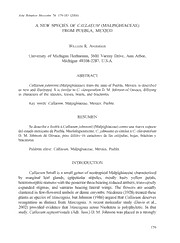
A NEW SPECIES OF CALLAEUM (MALPIGHIACEAE) FROM PUEBLA, MEXICO

Manifiesto cubista

The Founding Fathers of American Intelligence

IS 15644: Safety of Electric toys

Instability, Index Theorem, and Exponential Trichotomy for Linear Hamiltonian PDEs
![BNL - Superconducting Accelerator Magnets [presentation slides] book image](https://cdn.pdfdrive.to/media/content/thumbnails/e210c065-f8e6-4d85-899f-6262e2e9ed29.webp)
BNL - Superconducting Accelerator Magnets [presentation slides]

The Baptist Record Jan. 25. 2007
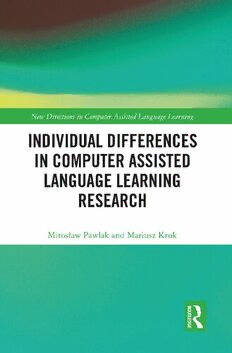
Individual Differences in Computer Assisted Language Learning Research

Office Ergonomics
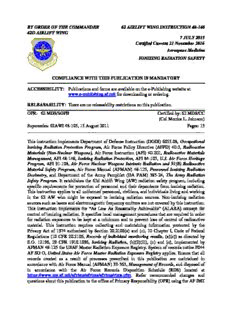
BY ORDER OF THE COMMANDER 62D AIRLIFT WING 62 AIRLIFT WING INSTRUCTION 48-148 ...

Soil Survey of Nez Perce National Forest Area, Idaho (2006)

bahçecilik kalanchoe yetiştiriciliği
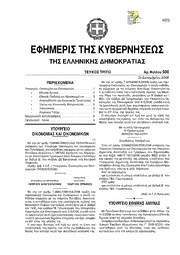
Greek Government Gazette: Part 3, 2006 no. 500
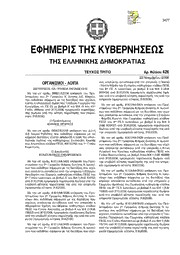
Greek Government Gazette: Part 3, 2006 no. 426

